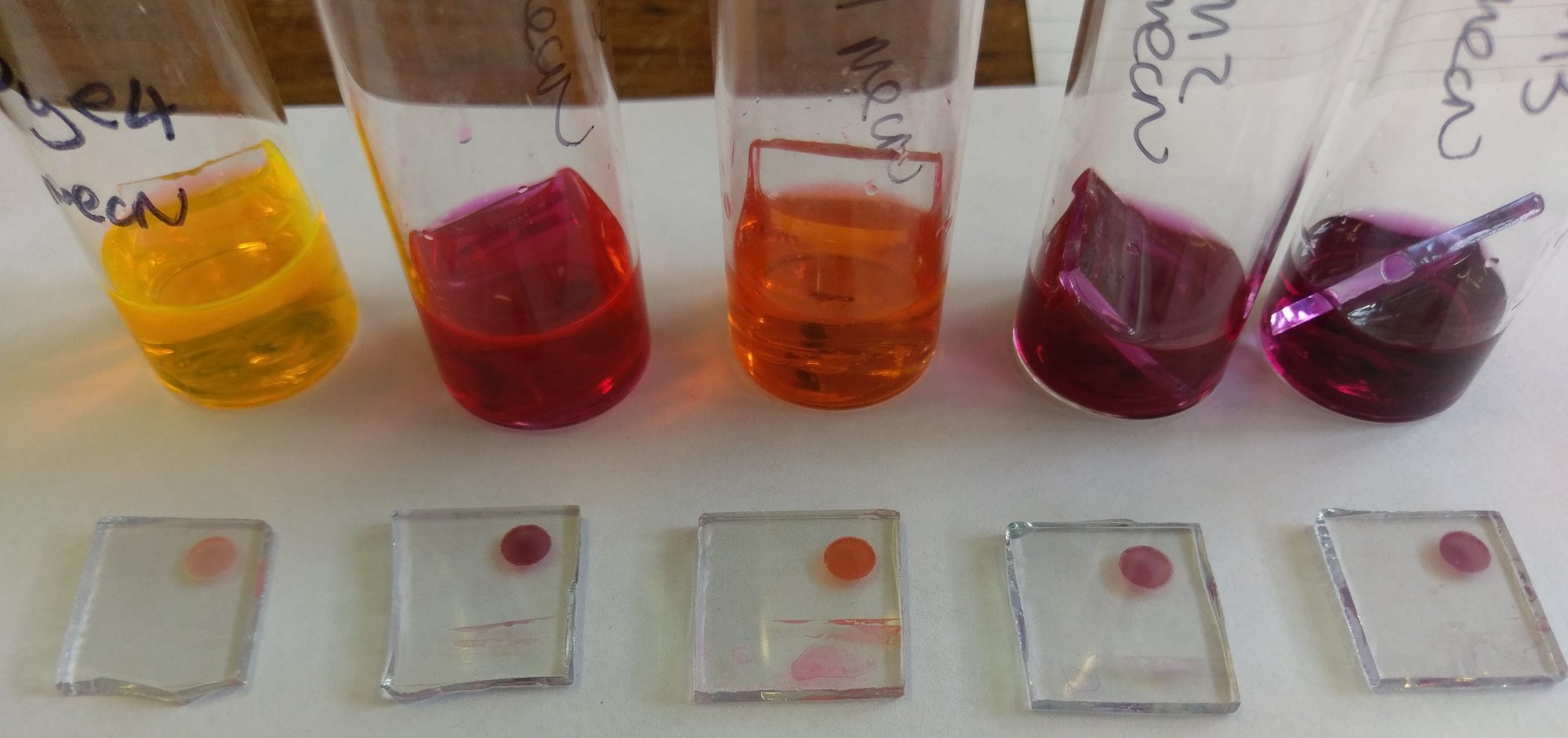The 2nd Molecules and Materials for Artificial Photosynthesis conference was held form the 25-28th February 2016 in Cancun, Mexico. The meeting was chaired by Pof. Jin Zhang and Prof Antoni Llobet and there were 66 participants altogether. I gave a 25 minute invited talk on the Saturday morning entitles “Dye-sensitized photocathodes for solar fuel devices”. Most of the talks were focused on the challenge of Water-splitting to generate hydrogen with some presentations on CO2 reduction and methanol oxidation. The following is a selection of the themes of the conference and highlights for each:
Devices
On the first day, the theme was “Water-Splitting: materials and Fundamental Issues” and the opening lecture was by Professor Kazunari Domen of The University of Tokyo. Prof Domen presented many videos showing hydrogen and oxygen evolution from the water splitting devices made in his laboratory. A 4 x 4 cm screen printed panel was a particular highlight and an inspiring beginning to the conference. Other devices were presented by e.g. Mario Lanza (Ni-coated photoanodes based on a Ti foil substrate, Si absorber protected by SiO2 and coated with a Ni catalyst). In general it was shown that the particle size (<5 nm) is important for catalyst activity and oxide layers (TiO2, SiO2) are key to stability. Prashant Kamat highlighted the merits of using PV+ electrolysis (12.3 % conversion efficiency), particularly by taking advantage of new perovskite absorbers.
Theory and Mechanisms
James Muckerman presented a theoretical approach, including a proposed mechanism for water splitting over GaN. Several talks discussed the surface chemistry of metal oxides (Aleksandra Vojdovic, Qinfeng Ge, Bart Bartlett CuWO4, Curtis Berlinguette NiO). Much of this was theory based but James Durrant and representatives from his group showed how the intermediates at the surface can be monitored during catalysis using photoinduced absorption spectroscopy. James McCusker gave an inspiring talk on controlling the photophysics of first row transition metal (e.g. Fe)-based photosensitizers by tuning the geometry of the ligands and adding substituents (e.g. t-Bu) to block vibrational relaxation. I discussed this technique which he called vibronic phasing in detail with him as it should be very useful for my own research. Likewise the talk by Charles Schuttenmaer on in-situ THz spectroscopy of WO3 devices was impressive. The group have developed a patterned grid structure that allows sufficient transparency in the transparent conductive substrate for transmittance measurements to be made on the charge-carriers.
Nanotechnology
Inspiring talks regarding the synthesis of nanostructured materials were given by Lionel Vyssieres (spontaneous and precise deposition of a molecular catalyst on the tip of “nano pyramids” driven by a photoinduced electric field enhancement); Zetian Mi (Ga(In)N nanowires which have the ideal electronic level alignment for water splitting without the need for sacrificial agents); Shihe Yang (solution processed nanowires, perovskite nanowires, FeNi, FeNiS double layer structures);
Molecular materials
Tong Xu presented a hybrid approach, based on Pt complexes and a Ru(bpy)32+ dye in MOF 253. Richard Finke described the challenges of proving the identity of the catalyst. Several talks described the role of coordinating ligands in the catalytic mechanism (Douglas Grotjan and Elizabeth Papish, pH responsive ligands; Jozsef Pap, Elisabeth Romero, Xuan Zhao, pendant bases; Ken Sakai Ni pyrazine dithiolene ligands; Marc Robert porphyrins & Etsuko Fujita, OH-functionalised bipyridines for CO2 reduction; Craig Richmond, role of axial ligands in Ru(bda)L2 water oxidation catalysts) and this seems to be the general trend in the field.
Catalysts
The most popular catalysts currently seem to be RhCr2O3 and Ni for hydrogen evolution, CoPi, NiCeOx and NiO for oxygen evolution. Llobet’s dinuclear Ru and Cu complexes lead the way in molecular photocatalysts.
